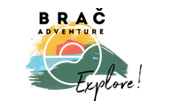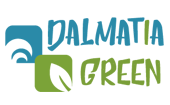Nestling between the Alps, the Pannonian Plain and the Adriatic Sea, in the south-eastern part of the European continent, Croatia jealously protects eight national parks, ten nature parks and a whole range of special reserves, including plant life, animals, geological formations... Croatia's amazing landscapes enable numerous activities possibilities.
You can find hundreds of sparkling waterfalls and more than a thousand islands where you can sea-kayak or sail. You will enjoy canyoning, rafting or kayaking in the green mountain rivers, in its rapids and impressive canyons.
“My Croatian holidays are the high point of my year, as soon as I return home to England,I start planning my next visit to Lijepa nasa Domovino. So much time is spent in thinking about and researching my holidays in your country. When in Croatia, I feel uplifted and inspired,yet at the same time calmed and soothed: I get complete relaxation in your country. On the flight I look eagerly for my first glimpse of your beautiful coastline and islands: when I land at Split, Dubrovnik, Pula or Zadar, I could almost kiss the ground!11 years ago was that unforgettable, blessed day when I first set foot on your soil. I didn’t know what to expect, but found what I’d always been looking for: previous foreign holidays were okay, I liked the warmth and sunshine, but somehow it wasn’t as beautiful as home in England! But, in Croatia, the blend of sea, mountains and islands, dotted with beautiful historic towns, cannot be matched.”
James, England
Official name: the Republic of Croatia
Geographical position:
Croatia extends from the furthest eastern edges of the Alps in the northwest to the Pannonian Plain and the banks of the Danube River in the east. Its central region is covered by the Dinaric mountain range, while its southern parts extend to the Adriatic coast.
Area:
The mainland covers 56,542 km², while the surface of the territorial sea is 31,067 km².
Population:
Croatia has a population of 4,437,460 inhabitants, where the majority are Croats (app 90 %) while ethnic minorities are Serbs, Slovenians, Hungarians, Bosnians, Italians, Czech and others.
Zagreb - Trg kralja TomislavaCapital:
Zagreb, with its population of 779,145 is economic, traffic, cultural, scientific and academic centre of the country.
Length of coastline on the Adriatic Sea:
5835 km of which 1,777 km is mainland, while 4058 km is coastline of islands, islets and reefs.
Number of islands, islets and reefs:
Croatia has incredible number of 1,185 islands, islets and reefs with Krk and Cres being the largest islands. From this huge number, only 50 islands are inhabited.
The highest peak:
Dinara (part of Dinaric Alps) with altitude of 1,831 meters (6,007 ft)
System of government:
Republic of Croatia is a parliamentary republic.
Climate:
There are two climate zones in Croatia:
- Temperate continental climate (partially mountainous climate) that prevails in the inland parts and
- Mediterranean climate that dominates along the Adriatic coast and is characterized by lot of sunny days, dry and hot summers, mild and rainy winters.
Average temperatures in the inland are: 0ºC to 2ºC (32ºF to 36º F) in January and 19ºC to 23ºC (66ºF to 73ºF) in August.
Average temperatures at the seaside are: 6ºC to 11ºC (43ºF to 52º F) in January and 21ºC to 27ºC (70ºF to 81ºF) in August.
The sea temperature in winter is 12ºC (54 ºF) and in summer 25ºC (77ºF)
Money:
Currency used is called Kuna (Currency Code=HRK), which refers to a marten, an animal whose fur was used as mean of payment throughout Croatian history.
Subunit is called Lipa and it refers to linden (lime) tree. 1 Kuna = 100 Lipa
Foreign currencies can be exchanged at banks, exchange offices, post offices, travel agencies, and hotels. At majority locations, it is possible to pay with credit cards, while Kuna in cash can be taken out from ATM.
Official language:
Croatian (Hrvatski)
Foreign languages used:
English, German, Spanish, Italian, French
Comute & visit:
Croatia has eight airports, located in all major economic and tourist centers: Zagreb, Split, Dubrovnik, Pula, Zadar, Osijek and on two islands: Krk and Brac.
Capital city of Zagreb is 380 km up north from Split and they are connected with a recently built highway called Dalmatina.
Split is the main traffic hub of Dalmatia region and during summer season it is very well connected with all Dalmatian islands by ferry.
Croatia has eight national parks: Paklenica, North Velebit, Plitvice Lakes, Brijuni archipelago, Kornati islands, Krka River and Mljet island.
Culture:
Croatia is abounds with historical and cultural monuments from different periods due to turbulent historical events and the interweaving of different cultures. Its architecture on a coastline is characterized by influences of Mediterranean culture, and many ancient monuments from Greek and Roman period can be found along the coast.
Continental Croatia is part of the Central European cultural circle that emphasizes the old towns, fortresses and castles from the late Middle Ages and architecture from the Baroque period.
Three urban units and two monumental complexes are included in the register of the Monuments of World Cultural Heritage by UNESCO.
Those are: the Diocletian’s palace in Split, the towns of Dubrovnik and Trogir, the Euphrasian basilica in Porec and St. Jacob’s cathedral in Šibenik.
The national park called Plitvice Lakes is also included in the register of Monuments of World Cultural Heritage by UNESCO.























